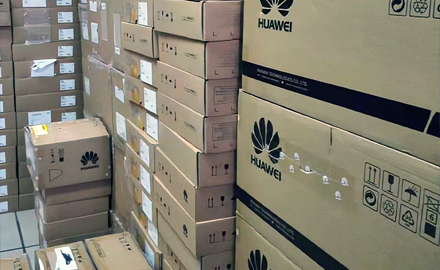The outlook for the development of optical communications in 2024 is marked by a dynamic landscape characterized by rapid advancements, evolving technologies, and a growing demand for higher data rates, increased capacity, and enhanced reliability. As we peer into the near future, several key trends and developments emerge, shaping the trajectory of optical communications across various sectors.
1. Transition to Higher Data Rates:
One of the prominent trends in optical communications for 2024 is the continued push towards higher data rates. With the ever-increasing demand for bandwidth in applications such as video streaming, cloud computing, and the Internet of Things (IoT), optical communication technologies are evolving to support faster transmission speeds. Emerging standards like 400 Gigabit Ethernet (400GbE) and beyond are expected to gain traction, enabling networks to accommodate the escalating data requirements of modern digital services.
2. Expansion of 5G Networks:
The deployment and expansion of 5G networks are pivotal drivers in the development of optical communications. As 5G technology continues to roll out globally, optical communication infrastructure will play a critical role in providing the necessary high-capacity, low-latency connectivity required by 5G applications. Fiber-optic networks will be instrumental in connecting 5G base stations, data centers, and supporting the increased demands for mobile broadband and ultra-reliable low-latency communication (URLLC) in diverse environments.
3. Increased Deployment of Coherent Optics:
Coherent optical technology is set to play a central role in the optical communications landscape in 2024. This technology enhances the efficiency of optical fiber networks by enabling the simultaneous transmission of multiple wavelengths, thereby increasing the overall data-carrying capacity. The deployment of coherent optics in metro and long-haul networks is expected to grow, driven by the need for greater spectral efficiency and improved reach in optical communication links.
4. Advances in Space-Division Multiplexing (SDM):
Space-Division Multiplexing (SDM) is anticipated to witness advancements in 2024, contributing to the development of optical communication systems with even higher capacity. SDM involves the use of multiple spatial channels within a single optical fiber, effectively increasing the fiber's data-carrying potential. Research and development efforts are likely to focus on refining SDM techniques and addressing the technical challenges associated with practical implementations.
5. Quantum Communication Initiatives:
Quantum communication is an emerging frontier in optical communications, leveraging the principles of quantum mechanics to enable secure communication channels. In 2024, we can expect increased research and development activities in the field of quantum key distribution (QKD) and quantum-safe cryptography. Quantum communication holds the promise of fundamentally secure communication, and its exploration is gaining momentum as the need for secure data transmission becomes increasingly critical.
6. Integration of Artificial Intelligence (AI) and Machine Learning (ML):
The integration of AI and ML technologies into optical communication networks is poised to grow in 2024. These technologies are expected to enhance network management, optimize resource allocation, and facilitate predictive maintenance. AI algorithms can analyze vast amounts of data generated by optical networks, leading to more efficient operation, improved fault detection, and proactive network optimization.
7. Enhanced Network Flexibility and Programmability:
The demand for network flexibility and programmability is driving the development of software-defined networking (SDN) and network functions virtualization (NFV) in optical communications. In 2024, we can anticipate further advancements in these areas, enabling dynamic network reconfiguration, efficient resource allocation, and the ability to adapt to changing traffic patterns and service demands.
8. Proliferation of Edge Computing:
Edge computing, which involves processing data closer to the source of generation, is influencing optical communication architectures. In 2024, optical networks will likely see an increased integration with edge computing infrastructure to reduce latency and enhance the performance of applications that require real-time processing. This integration aligns with the requirements of emerging technologies such as augmented reality (AR), virtual reality (VR), and IoT.
9. Sustainable and Energy-Efficient Solutions:
Sustainability and energy efficiency are becoming central considerations in the development of optical communication systems. In 2024, there will likely be a heightened focus on designing energy-efficient optical networks, deploying green technologies, and exploring novel approaches to minimize the environmental impact of the ever-expanding digital infrastructure.
10. Collaboration for Standardization and Interoperability:
Standardization and interoperability will remain critical factors in the development of optical communication technologies. Industry stakeholders are expected to collaborate closely to establish and adhere to common standards, ensuring seamless integration of diverse components and technologies. This collaborative approach will be instrumental in fostering a healthy ecosystem and driving widespread adoption.
In conclusion, the outlook for the development of optical communications in 2024 is shaped by a convergence of technological advancements, industry trends, and the evolving needs of a digitally connected world. The pursuit of higher data rates, the integration of cutting-edge technologies like AI and quantum communication, and the ongoing expansion of 5G networks collectively define a landscape where optical communication plays a central role in shaping the future of global connectivity. As the year unfolds, these trends are likely to propel optical communications into new frontiers, ushering in an era of enhanced capacity, efficiency, and innovation.
 The Difference Between AX1800 ONU and AX3000 ONU
The Difference Between AX1800 ONU and AX3000 ONU
 How are Huawei OLTs Classified?
How are Huawei OLTs Classified?
 The Future Trend of Optical Line Terminals (OLTs)
The Future Trend of Optical Line Terminals (OLTs)
 The Difference Between ONU and ONT
The Difference Between ONU and ONT